ARTIST STATEMENT
ARTWORK AND PROCESS
RESEARCH AND
CRITICAL REFLECTION
CONTEXT
EXTERNAL RESSOURCES
AND PROFESSIONAL SKILLS
A NARRATIVE OF EMPTHINESS
In her book A Philosophy of Emptiness, Gay Watson describes how our personal experience of emptiness such as living with change, with recognition of impermanence, with loss of all kinds can lead us to question the purpose of existence. Therefore, to most people the space of emptiness, of uncertainty and silence is a space that must quickly be filled with distraction, action and a search for new certainty. However, Watson argues that it is in works of artists of all kinds as much as philosophers that we will find expressions of emptiness that go far beyond lack.
In his essay The Sublime Unknown, Simon Morley discusses the meaning of the sublime experience and its relationship to the unknown by comparing western and eastern cultural orientations. In line with Watson, he describes East Asian approach as the condition of dynamic suspension between opposites, in contrast to a binary mode of thinking that proceeds in terms of discrimination between opposites. Hence, eastern philosophy urged us to open ourselves to a sense of absolute contingency, unpredictability, impermanence, emptiness and otherness.
To claim I want to make art that evoke a sublime experience is too ambitious. However, I do want to make art that invites the viewers to slow down, look, feel and be present in the moment. Therefore, the narrative of the space of emptiness, of uncertainty and silence is important in my work.
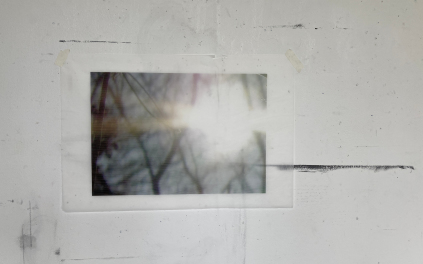
Interplay between my work and the stains on the wall.
MATERIALITY
Materiality is quite important in my work as mentioned above, so I looked into how Anselm Kiefer, in his interview with Tim Marlow at Louisiana Museum of Modern Art in 2010, argues that his works should continually evolve and be fluid. The process of creating is of outmost importance to him, as it is the process rather than the end that has his interest. He describes how he strives for fluidity in his work, and because he uses materials like straw, clay and led small pieces of his work continuesly falls off. Therefore, his work is a nightmare for museums and conservation can be a challenge, he says jokingly. I like Kiefer’s approach to fragile materials and their impermanence.
In addition, Kiefer repeatedly say that all materials have a spirit and he connects to the spirit of materials he use. Therefore he has to make all his work himself, oppose to having assistant do it. This reinforces my own belief that everything is interdependent or oneness, hence the buddhist interpretation of emptiness.
In my own work I believe that using fragile materials, creates ambiguous feelings for the viewer, because they want to touch the work and at the same time recognize the fragility and do not want to risk breaking it. Actually, in my silent crit that was one of consistent feedback, especially, so I think there is something to work with going forward.
So far I have worked with different types of thin papers, but also thick papers that are laser cut and therefore become fragile. And there is lots more to explore.
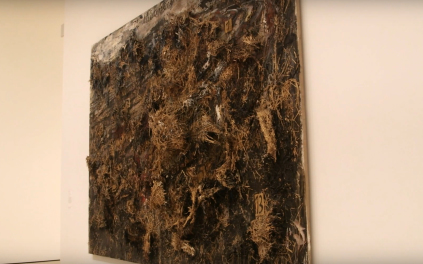
Screenshot of Kiefers work that show the fragility of his materials.
ARTIST BOOK
I have become a bit obsessed with artist books and specifically looked for artists with books as a part of their work and in many ways I got more than I asked for with these three artists.
OLAFUR ELIASSON
Olafur Eliasson’s A View Becomes a Window, created for Ivorypress, is an edition of nine unique books. The glass pages are full of illuminations as light is reflected and when the pages are turned, the layers of colored glass create complex reflections. I like how the combination of the empty transparent glass pages combined with different colors of light make the book so alive and vibrant.
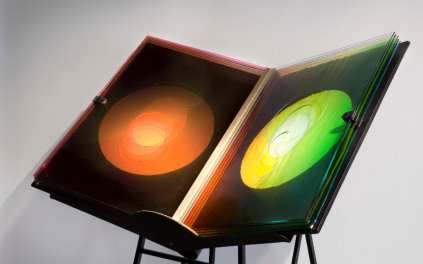
A View Becomes a Window by Olafur Eliasson.
ANISH KAPOOR
Zumtobel, an international lighting giant, commissioned Brighten the Corners design studio and Anish Kapoor to produce their 2011/12 annual report, which was seperated into two distinct volumes. A purely typographical, black and white book with the annual facts and figures alongside a publication of pure colour, a translation into print of Kapoor’s 1998 video work Wounds and Absent Objects. With my background in graphic design I absolutely love how art and design merge in a high quality publication.
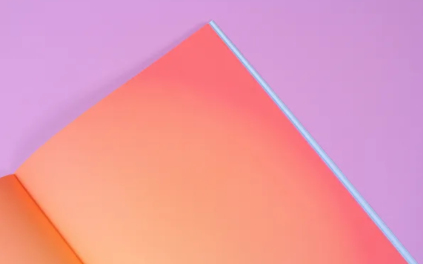
Page from Zumtobel‘s Annual Rapport with a reproduction of Kapoors work.
ANSELM KIEFER
Anselm Kiefer’s book, The Secret Life of Plants, recalls the outlines of constellations, which reference the astrological charts. The numbers refer to the NASA system, which allocates each star a certain number. For Kiefer both the heavens and plants represent earth’s beginnings and the eternal process of transformation. Once again Kiefer demonstrates his belief in interconnectedness and oneness, which I strive to embed in my work. But also the sheer size of the book, which is almot two metres tall, is impressive.
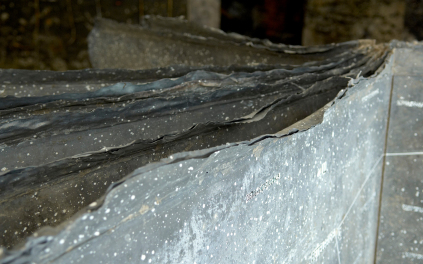
Close up of Kiefers book The Secret Life of Plants.
I find the work above very inspiring and at the same time I tend to relate more to the work of Altea Grau and Clare Bryan. Firstly because I attended their artist talks, which creates a more intimate experience of their work. Secondly I had a one to one tutorial with Clare and we share a background in graphic design.
ALTEA GRAU
On the one hand, Altea Grau investigates the book through ideas closely linked to the concept of the double page spread such as mirroring reflection, echo, the fold and suggestion of text. She describes her work as “allusions to texts” which call upon a curious and intimate look from the viewers. As such, Grau focuses on a fraction of the book, the double page spread, and not the book as a whole, let alone book binding.
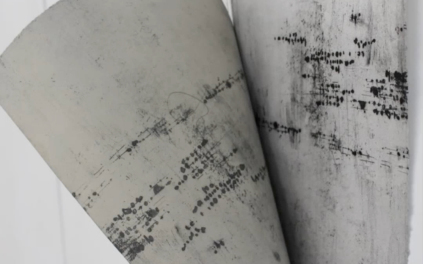
CLARE BRYAN
On the other hand, Clare Bryan, focuses on the book as a whole and her work involves manipulating and cutting paper, hence the processes involves both choice of materials and binding structure. She makes scalpel drawings in what appear, to be blank book structures but the turn of a page starts to reveal a narrative, often about place, scale and surface, and natural forms.
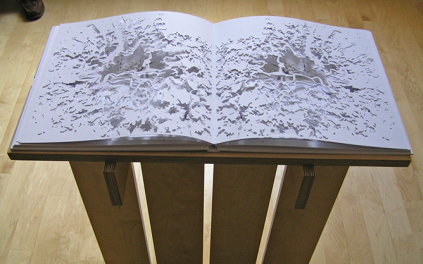
From this perspective I look at my own work and realize that what I like about the book is the turning of the pages. In combination with my desire to make work that is fragile and with different methods allow one image to occupy both sides of the paper, like a reflection, like a window and in essens an empty page. Also, in my tutorial with Clare she mentioned the intimacy of the book and that resonates with my intention to make the viewers slow down, look, feel and be present in the moment.